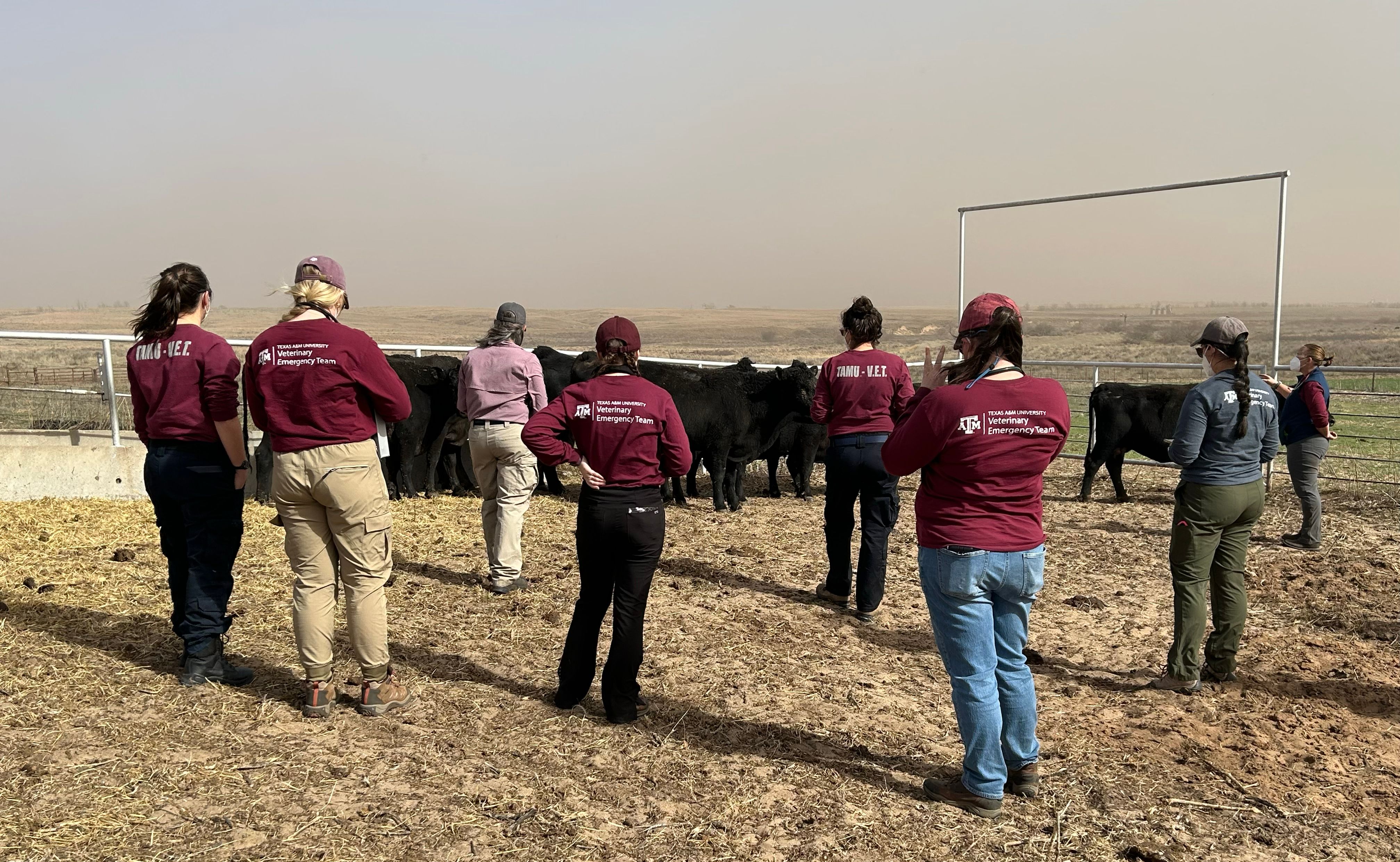Reaching patients affected by wildfire
Deb Zoran, DVM, PhD MS, director of the Texas A&M Veterinary Emergency Team, describes some of what wildfire response volunteers saw during their recent deployment, in an interview with dvm360®.
The Texas A&M Veterinary Emergency Team (VET) has been named a recipient of a $10,000 award from NAVC Gives, a philanthropic extension of the North American Veterinary Community. Members of VET— Texas A&M School of Veterinary Medicine & Biomedical Sciences students, faculty, staff and other volunteers— recently returned from deployment to the Texas panhandle, where the Smokehouse Creek wildfire burned. There, they provided medical care to species living on farms and ranches. In this video, Deb Zoran, DVM, PhD MS, director of VET, describes some of what VET volunteers saw during their deployment and the patients they cared for, in an interview with dvm360®.
Photo courtesy of Texas A&M School of Veterinary Medicine and Biological Sciences
The Texas A&M Veterinary Response Team in the field during their deployment to the Texas panhandle to provide veterinary care to animals affected by the Smokehouse Creek wildfire.

This video is the part of that interview and the first in a series. The following is a transcript:
Zoran, DVM, PhD, MS: This wildfire was completely different on every level than all of our previous fires. Properties that burned were spread out over these million acres that burned. When I say, ‘a million acres that burned,’ I don't even know how to get somebody to understand what that looks like. It's like the moonscape. You can't see anything that's not burned for as far as your eye can see, which is just like something you can't believe. So large parts of this fire impacted that kind of landscape. It was the ranches, it was the hills, the valleys, the canyons, all of these people's properties across that scape up there [in the Texas panhandle].
What we tended to see [as patients], were the animals that had escaped the fire, but maybe were burned and needed burn care. But they were onesies, twosomes that were found. Remember, the fire burned through fences. So, these animals that escaped the fire were found in canyons or were found running loose or were found wherever they were found. And so, we had horses, we had donkeys, we had a lot of cattle. But we only had a few dogs and cats because the houses [in the area] were spread few and far, if that makes sense. And, for us, that was a really weird thing. Because typically in fires, it's the opposite. We had some fire cats that escaped. Most of the cats up in this area live in barns. Ranchers would go back to their burned-out barns and would find the cats. And so, we had some fire cats.
Fire cats are amazing. They're very resilient survivors. If you can give them some burn care, they do really, really well. We had some burned horses that managed to escape enough of the fire that they just needed a little bit of burn care, not bad burn care. And then of course, we had some animals that were burned very badly and were not able to be saved.
The vast majority of the herd euthanasia occurred out in the field with cowboys. And that was because these are thousands and thousands of acres. Cowboys had to ride on horses to even find [the herds]. And so much of that initial, horrible, terrible, awful euthanasia happened by cowboys.
Reference
NAVC Gives Awards $10,000 to Texas A&M Veterinary Emergency Response Team for Smokehouse Creek Fire Response. News release. North American Veterinary Community (NAVC). April 17, 2024. Accessed April 17, 2024. https://prnmedia.prnewswire.com/news-releases/navc-gives-awards-10-000-to-texas-am-veterinary-emergency-response-team-for-smokehouse-creek-fire-response-302119592.html